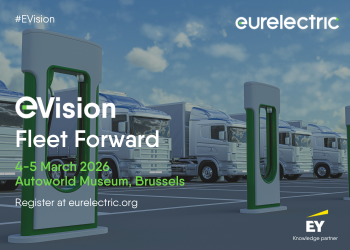Post - Articles
First ever large-scale HVDC interconnection for Middle East and North Africa
- 4 years ago (2021-10-06)
- Junior Isles
Hitachi ABB Power will lead a consortium that has been awarded a major contract from the Saudi Electricity Company and the Egyptian Electricity Transmission Company for the first ever large-scale HVDC interconnection in the Middle East and North Africa.

Eurelectric EVision
The new link will enable the Kingdom of Saudi Arabia (KSA) and the Arab Republic of Egypt to exchange up to 3000 MW of electricity – much of which is expected to be generated from renewable energy sources in the future. The connection will support the flow of power in multiple directions between three terminals and will be the first interconnection allowing the exchange of electric power between both countries.
Hitachi ABB Power will deliver advanced technologies for the high-voltage direct current (HVDC) power link between the countries. This includes the supply of three HVDC converter stations located at Medina and Tabuk in KSA, and Badr in Egypt. The business will also be providing system studies, design and engineering, transformers, valves, high-voltage equipment, technical advisory, commissioning and service, in collaboration with two consortium partners – Saudi Services for Electro Mechanic Works in KSA and Orascom Construction in Egypt.
The HVDC link will give Egypt access to the interconnected power grids of the Arabian Gulf, and KSA access to those of North Africa, whilst strengthening grid resilience and power supply security. Both countries have ambitious carbon-neutrality targets. The Kingdom of Saudi Arabia is working to increase the share of natural gas and renewable energy sources to approximately 50 per cent by 2030 , and the Arab Republic of Egypt intends to increase the supply of electricity generated from renewable sources to 42 per cent by 2035 . The connection directly contributes to the realisation of these goals. The in-country value of the investment is significant, generating new jobs and knowledge transfer for people in KSA and Egypt.
Commenting on the project, Claudio Facchin, CEO, Hitachi ABB Power Grids, said: “We are enabling interconnections between continents, with unique capability to reliably exchange electric power at scale, across borders and time zones.”
In the longer term, the link has the potential to be part of a more broadly interconnected energy system with Europe and the eastern Mediterranean, allowing the exchange of solar power from the south and east with wind and hydro power from the north.
